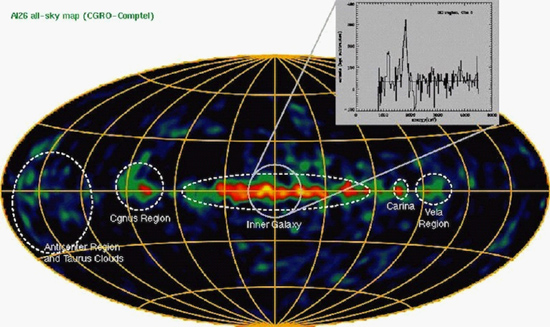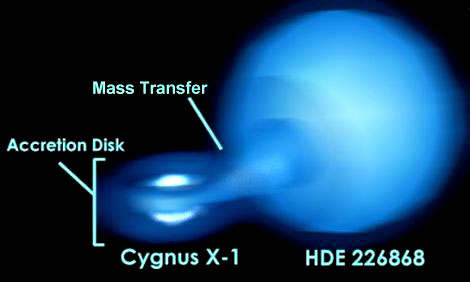|
by Stephen Smith from Thunderbolts Website
INTEGRAL gamma-ray image showing isotopic aluminum-26 distribution in the galactic plane. Credit: CGRO/COMPTEL
On October 17, 2002 the European Space Agency (ESA) launched the most sensitive gamma-ray observatory ever sent into space, the INTErnational Gamma-Ray Astrophysics Laboratory (INTEGRAL).
Its 10,000 kilometer perigee and 153,000
kilometer apogee means that the spacecraft spends most of its time
outside of Earth's obscuring radiation belts. INTEGRAL will remain
funded until December 2012.
The fact
that the two objects radiate at high frequencies and with great
intensity provides support for an interpretation based on the tenets
of an
Electric Universe.
Explaining the jets of ionized particles seen emanating from various objects in space is one of the most difficult tasks facing modern astronomy.
Hundreds of stellar jets have now been observed since Cygnus X-1 was first seen in 1964.
The prevailing theory of "compact gravitational point sources" heating gas and dust in an accretion disk does not address the existence of collimated jets. There is only one force that can hold such a structure together: magnetism.
The only way to
generate the magnetic fields necessary for bipolar jets is with
electricity flowing through space.
The two lobes of Cygnus X-1's radio jet represent a cone of plasma viewed from the side.
It is an example of a stellar scale dense plasma focus or "plasma gun." Surrounding the stellar binary is what should more properly be called an "expulsion disk," rather than an "accretion disk."
Also, plasma arc discharges are known to generate high-energy ultraviolet light.
The more electric current supplied to
the arc, the higher the frequency. If enough power is supplied,
X-rays and gamma-rays can be generated.
Perhaps the gamma-rays (and X-rays)
from Cygnus X-1 are really flashes of cosmic lightning coming from
electrified clouds of plasma on a stellar scale.
|


